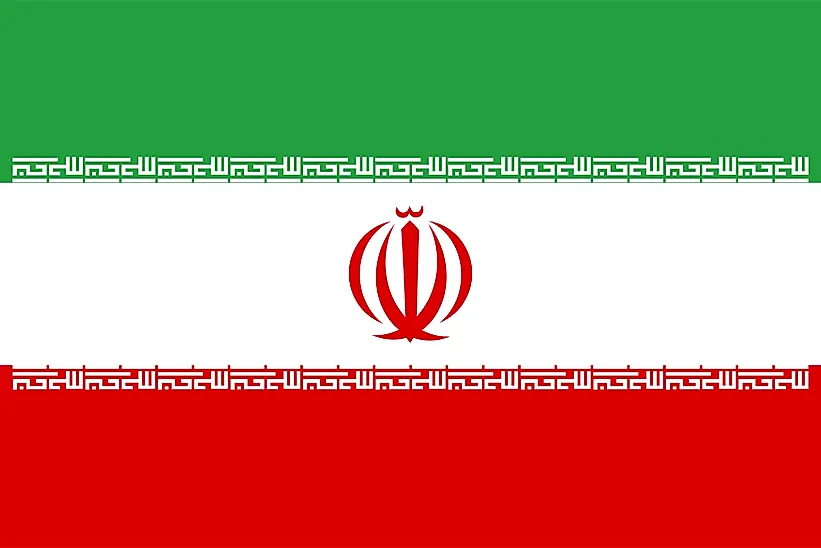
イラン
| 大陸 | アジア |
| 資本金 | テヘラン |
| 人口 | 82,801,633 |
| GDP | $1.46兆ドル |
| 一人当たりGDP | $18,100 |
| ダイヤルコード | +98 |
| ISOコード(2文字) | IR |
| ISOコード(3文字) | かいとりしきせんようチューナー |
イランについて
古代ペルシャ文明と現代文化が融合する国、イランへようこそ。1,648,195平方キロメートルの国土に約8,500万人の人口を抱えるイランは、数千年にわたる歴史的遺産と地理的多様性を兼ね備え、世界で最も古い文明のひとつに数えられています。
地理的特徴と自然の美しさ
イランの地理は、北はカスピ海沿岸から南はペルシャ湾まで、非常に多様性に富んでいる。イランには、北部のアルボルズ山脈と北西部から南東部にかけて広がるザグロス山脈という2つの主要山脈がある。
ダシュト・エ・カヴィールやダシュト・エ・ルトのような広大な砂漠が広がり、肥沃な渓谷や太古の森もある。カスピ海沿いの亜熱帯地域から乾燥した砂漠地帯まで、変化に富んだ地形が複数の気候帯を生み出している。
保護地域には、ユネスコの世界遺産に登録され、最終氷河期までさかのぼる太古の森林が保存されているヒルカニア森林地帯や、ペルシャヒョウやアジアチーターなどのユニークな野生生物を保護するさまざまな国立公園がある。この国の地理的位置は、さまざまな生態系にまたがる顕著な生物多様性を生み出している。
文化遺産と伝統
イラン文化は世界最古の文明のひとつであり、文学、芸術、建築において豊かな伝統を持つ。特にハーフェズ、ルーミー、フェルドウィーのペルシャ詩は、世界の文学や哲学に影響を与え続けている。
伝統芸術には、ペルシャ絨毯織り、細密画、書道、金属細工などがある。ペルシャの建築遺産には、ペルセポリス、イスファハンのナクシュ・エ・ジャハーン広場、数多くの歴史的なモスクや宮殿などの壮大な例がある。
イラン料理は、古くからの伝統と地域の多様性を反映しており、ハーブ、スパイス、果物の独特な使い方が特徴である。伝統工芸には複雑なタイル細工、陶器、織物などがあり、音楽は古典的なペルシャ音楽と地域の民俗音楽の両方の伝統を受け継いでいる。
歴史の旅
イランの歴史は、エラム人やアケメネス朝をはじめとする古代文明から、さまざまな帝国を経て現在の地位に至っている。キュロス大帝のペルシャ帝国は、宗教的寛容と多文化統治の原則を確立した。
重要な時代には、科学と芸術への大きな貢献を見たイスラム黄金時代、サファヴィー朝の文化的開花、1979年のイスラム革命を含む現代の発展が含まれる。数学、天文学、医学への歴史的貢献は、世界の知識に影響を与え続けている。
現代の経済状況
今日のイラン経済は、農業と手工業における伝統的な強みと、著しい工業発展を兼ね備えている。イランは石油と天然ガスの埋蔵量を維持しながら、さまざまな経済部門を発展させている。
最近のイニシアチブは、特にバイオテクノロジーとナノテクノロジーにおける技術進歩に焦点を当てている。イランの教育水準の高い労働力と多様な経済基盤は、地域の経済大国としての地位を支えている。
国際関係とグローバルポジション
イランは複雑な国際関係を操りながら、地域に大きな影響力を維持している。イランの戦略的立地と文化的影響力は中東と中央アジア全域に及んでいる。
ご存知でしたか?
- パラダイス」という言葉は、古ペルシア語の「パルディス」に由来するのか?
- イランには世界最大の歴史的な橋のコレクションがある?
- ポロ競技の起源は古代ペルシャ?
- イランの科学者が代数学とアルゴリズムに大きな貢献をした?
結論
イランは、古代の遺産と現代的な願望が見事に融合した国である。イランは、考古学的遺産から現代の革新的技術まで、文学的遺産から科学的成果まで、独自の文化的アイデンティティを維持しながら進化し続けている。イランは、現代的な課題とチャンスに取り組みながら、豊かな遺産を守り、将来の可能性を発展させることに全力を注いでいる。





